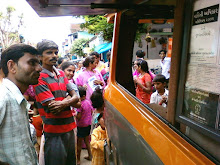Youthkiawaz: Abhishek Jha: Sunday, January 15, 2017.
When the new Juvenile Justice Act was passed by the Parliament more than a year ago, Union Minister for Women And Child Development (WCD) Maneka Gandhi had guaranteed everyone in Parliament that any juvenile who committed a crime with ‘a childlike mind’ would never go into an adult jail. On interacting with different stakeholders, YKA, however, discovered the abysmal state of implementation of the Act, with juveniles continuing to be sent to jail without any regard for either the new law or for that matter the old one.
The Juvenile Justice (Care and Protection of Children) Act 2015 came into effect on January 15, 2016, replacing the earlier 2000 Act. Records available with the Delhi State Legal Services Authority (DSLSA) and with the Juvenile Justice Board-II of Delhi, however, indicate that juveniles in conflict with law are still languishing in adult jails in violation of the Act and the guidelines issued by the Delhi High Court in 2012.
Moreover, with a section of the new Act – requiring officials to inspect adult jails to search for probable juveniles lodged therein – not being followed in most prisons in the country, and fake age memos possibly being used by the police to keep juveniles in adult prisons, the state of juvenile justice can only be described as precarious at best.
The Journey So Far
When the WCD minister had introduced the Bill in Parliament, she had claimed that this wasn’t a ‘common or garden bill’. The Bill proposed that children between the age of 16 and 18, who commit offences punishable with a prison sentence of 7 or more years under the IPC, could be tried as an adult and sent to an adult prison after they attained the age of 21. Explaining away the reservations against sending a juvenile to the adult system, the minister had said that juveniles had to be deterred from committing crime and therefore a fear of the adult criminal justice system as opposed to the juvenile system was needed to be driven into them.
Even before the passage of Act though, juveniles were being convicted as adults. The Delhi High Court was, in fact, until January 2015 issuing directions for identifying juveniles in adult jails in a writ petition commonly referred to as 8889, filed after a letter written to court by advocate and child rights activist Anant Asthana. The letter carried an RTI reply that HAQ-Centre for Child Rights had obtained from Tihar containing data which showed that juveniles were anyway being thrust into the adult system.
After the court took cognisance of the petition in 2011, the National Commission for Protection of Child Rights (NCPCR) was asked to constitute a panel of 10 members for visiting jails in Delhi to “find out if there are any persons lodged in such jails who should have been the beneficiaries of the JJ Act”. The NCPCR was to report to the Member Secretary of the Delhi State Legal Services Authority (DSLSA), which was also asked to send its lawyers for inspection.
The number of probable juveniles found in Tihar and Rohini jails in initial visits by the members of the panel, hovered around 100 every month, documents available on DSLSA’s (made nodal authority in the matter) website show. But even in 2016, four years after the visits began, 20-40 probable juveniles were being found every month in these jails.

Table 1: Number of probable juveniles found at Tihar and Rohini jails when the visits began. Source: DSLSA
When YKA called Dharmesh Sharma, Member Secretary of the DSLSA, he said that of those making claims of juvenility, around five to ten percent were actually found to be juveniles after inquiries were made into their age. A total of 258 probable juveniles were found between January and September 2016 in Tihar and Rohini jails. By Sharma’s estimate, around 13 to 26 children can be said to have spent some time in an adult prison in Delhi yearly, a city which child rights activists and lawyers YKA spoke to say has the best JJ system in the country

Table 2: The numbers for each month in the year 2016 and total numbers from 2012-2016. Source: DSLSA
Sharma’s is not the only estimate. Ashish Kumar, a legal aid counsel with the JJB-II of Delhi, after calculating the number of fresh cases the Board received in 2016, told YKA that out of the 1971 fresh cases the Board received, 39 were cases that the Board had received from transfer, most of which are likely to have been transferred from an adult court. JJB-II has jurisdiction over only 6 out of the 13 police districts and he said that such cases may be more if data from the other two JJBs is included.
To be sure, the possibility of cases of juveniles first appearing in an adult court is provided for in the law as long as they are also transferred to the Juvenile Justice Board as per rules. What indicates possible violation of the rules is the production of juveniles first in an adult court for, at the very least 39 cases, in an year coupled with the fact that some children were also being simultaneously found in an adult prison- either by procedural or deliberate error.
When questioned, Prashant Kumar Verma, Officer-in-Charge (Legal) of Tihar Central Prisons, did not outrightly deny the possibility of juveniles wrongly landing up in adult jails. He said that the “jail authorities are supposed to comply” with the orders of the respective court as they are just “custodians” and that most inmates claim juvenility to escape tougher punishment. Dheeraj Mathur, Staff Officer to the Director General of Prisons, asked YKA to direct further queries on email and promised to provide data on number of juveniles transferred out of Tihar to juvenile homes in 2016. There was no reply from him until the time of writing this story.
Jail Visits
The model rules for the new Act notified by the Government on September 21, 2016 mandated regular visits by Principal Magistrates of JJBs to adult jails to find probable juveniles. But as telephonic conversations with Superintendents of several central and district prisons reveal, the visits are yet to begin. Some jail officials did not even appear to be aware of the new provision made in the Act.
“We don’t keep any juveniles. So there is no question of anybody visiting,” Deepak Sharma, District Jail Faridabad told me. Similarly the Superintendent of Central Jail Hisar-I, Haryana said, “In entire Haryana there is no juvenile in any jail. The jail for juveniles is entirely different”. When again asked specifically whether any Principal Magistrate of a JJB had visited the jail since September, he said, “They go there (to the Observation/Special Homes, etc). They can’t come to us. We don’t have any juveniles”. The Superintendents of District Jail, Sivasagar, Central Prison, Vishakhapatnam, Model Central Jail, Nahan, Central Prison, Mysore, Central Prison and Correctional Home, Thiruvananthapuram, Burdwan Central Correctional Home and Central Jail Bareilly- all offered similar replies.
In Delhi too, since the High Court order, the visits have become less vigorous, Ashish Kumar, who has also been a member of the panel visiting the jails told YKA. “On my first day of visit, I found one (probable juvenile). He was convicted. Jail number 4 is for convicted prisoners. This was conducted in 2015. July or August maybe,” he said. Despite this, visits to jails barring Jail No. 7 were discontinued after 2 months, Kumar claimed.
Calls made to NCPCR’s relevant officials did not elicit any response. However, an update on its website about jail visits in April and May 2016 does not mention Rohini district jails, suggesting visits to the jail may have been discontinued.
Police Subverting The Law
Since the High Court issued detailed guidelines in 2012, police has also found ways to subvert those guidelines.
“What is the common thought? Once the accused comes into the adult criminal justice system then only he can be deterred, because juvenile justice is too much friendly for the juvenile,” Kumar told YKA. This has led the police, he alleged, to prepare false age memos. The Court had directed the police to prepare age memos even while apprehending accused between the ages of 18 to 21.
“What the police officer started doing is that even in cases of juveniles who were 18, they started writing 22 in their age memo, because if you are 18-21 years old, you land up in jail number 7 which was regularly inspected then. That is why, only inspecting jail number 7 is not enough. Apart from training of police officials, we should see all the jails,” Kumar explained.
A Sub-Inspector, working as a Juvenile Welfare Officer (JWO) for the past 7 years, told YKA that there is a lot of difference between the theory of the Act and its practice. He said that while there are a lot of rules in the Act, it was not possible to follow all rules. Asked why, he said, “The tendency of the children here has become criminal”. Preparing age memos for children belonging to another state was also a issue, he added, requiring an officer to visit the state and for relevant authorities to conduct ossification tests.
“From the point of displaying important information on the board (at the police station) to the point of regular follow ups (the guidelines are not being followed,” Bharti Ali, the Co-Founder and Co-Director of HAQ, alleged. Ali’s interventions had led to JJBs being empowered to issue delayed birth certificates, something which could have eased the problem police officials face with age inquiries, for instance, if guidelines were being followed verbatim.
Senior police officials this reporter spoke to also told him that there were no lapses on part of officers – definitely an anomaly considering the fact that juveniles can still be found in adult prisons.
“The implementation is the most alarming thing. Even the 2000 Act is still not implemented. And if you didn’t implement the earlier Act, how can you say that the earlier Act was mandated to be amended. How can you say so? You didn’t implement that,” Kumar rued.
Whether the new Act will decrease the incidence of juveniles coming in conflict with law is then anybody’s guess.






























